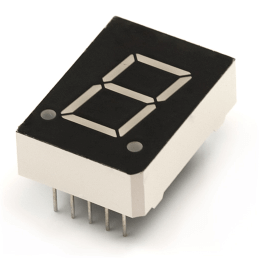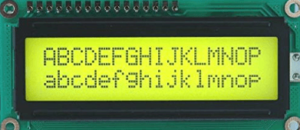Digital Display Technologies encompasses a range of methods that are used to present information in a clear, visual format. These technologies include LED (Light Emitting Diode), LCD (Liquid Crystal Display), and gas discharge displays. Each type has unique characteristics, advantages, and applications. Understanding these technologies is crucial for selecting the right display solution for various devices, from calculators and wristwatches to sophisticated electronic instruments. In this article, we delve into the different types of digital displays, their operational mechanisms, and their benefits and drawbacks.
Table of Contents
The display of a measured quantity in decimal numbers on a digital instrument is called a display. The following devices are used for this display:
- LED = Light Emitting Diode
- LCD = Liquid Crystal Display
- Nixie Tube
- Segmental Gas Discharge Display
Among these designs, LED and LCD are widely used.
Digital display systems are mainly divided into 2 categories:
- Segmental Display
- Dot Matrix
Segmental Display is further divided into two types:
- Seven-Segment Display
- Fourteen-Segment Display
Dot Matrix Display is further divided into two types:
- 3×5 Dot Matrix Display
- 5×7 Dot Matrix Display
Seven-Segment Display
A Seven-Segment Display is a method where seven display devices, such as LED or LCD, are arranged to show ten segments from 0 to 9, similar to the digit 8. It is known as Seven-Segment Display.

Each display device has a switch to provide supply. By sequentially turning various devices or segments on and off, it can display numbers from 0 to 9.
3×5 Dot Matrix Display

In a 3×5 Dot Matrix Display, 15 display devices are arranged in a matrix of three columns and five rows, which are connected to a power supply through switches. By sequentially turning these devices on and off, characters and numbers are displayed.
LCD (Liquid Crystal Display)
LCD is a type of digital display device that uses the Seven-Segment Display method similar to LED.

LCD is further divided into two types:
- Dynamic Scattering Type
- Field Effect Type
Dynamic Scattering Type LCD
Liquid Crystal Material consists of several chemical compounds with unique properties. These liquid crystals are placed between transparent electrodes within a glass sheet of about 15μm thickness.
When voltage is applied to the cell, charge carriers flow through the LCD material, causing light to scatter throughout the liquid, making the cell appear bright.
Field Effect Type LCD
The structure of Field Effect Type LCD is similar to that of Dynamic Scattering Type LCD. However, it includes two thin polarizing optical filters inside the glass sheet.
This LCD material is of the twisted nematic type. When light passes through it, it twists, and the light flows through the optical filter, making it appear bright.
Advantages and Disadvantages
Now that we know about Liquid Crystal Display, let’s look at its advantages, disadvantages, and uses.
Advantages:
a) Low power consumption.
b) Operates at low voltage.
c) Relatively inexpensive.
d) Consumes less current.
e) Operates at low frequency.
Disadvantages:
a) LCD is a slow display device.
b) Can only be used with AC current.
c) Requires more space for installation.
Uses:
Used in calculators, wristwatches, and seven-segment displays.
Gas Discharge Display

This method uses a type of cold cathode discharge tube called a Nixie Tube. A positive electrode is used in the Nixie Tube, supplied with positive voltage, and is called an anode.
Ten separate cathodes are used, each marked from 0 to 9. These electrodes are enclosed in a gas-filled glass envelope.
Connecting pins are extracted from the bottom of the tube. The tube generally uses neon gas, which emits orange-red light. Now, let’s learn about the advantages and disadvantages of this display system.
Advantages:
a) Low power consumption.
b) Provides a bright display.
c) Low current flow.
Disadvantages:
a) Large size and heavy.
b) Uses fragile glass tubes.
c) Requires high voltage for operation.


